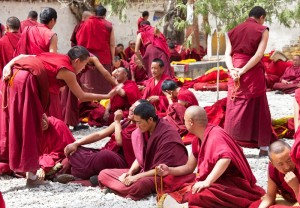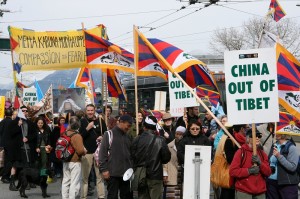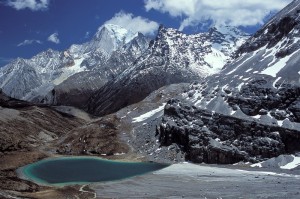China and Southeast Asia: Waking up the Neighbors
Introduction
 If China is to be the world’s next superpower, then Southeast Asia is its ‘backyard’, just as Central Asia was to Russia during its superpower era, and Central America is to the US. It is a diverse region made up of countries of various sizes, political systems, and levels of development, with annual GDP per capita ranging from a little over $1,000 (Myanmar and Laos) to $50,000 (Singapore). China competes for influence in this area both with its main regional rivals – Japan and India – as well as its main global competitor – the US. China’s successes in gaining trust and deepening economic ties with Southeast Asia have been hampered by a complex shared history that both facilitates cultural commonality, and fosters mistrust of the intentions of a powerful, hegemonic China. The relationship is also challenged by historically-rooted territorial disputes that occasionally flare up, threatening peace in the region.
If China is to be the world’s next superpower, then Southeast Asia is its ‘backyard’, just as Central Asia was to Russia during its superpower era, and Central America is to the US. It is a diverse region made up of countries of various sizes, political systems, and levels of development, with annual GDP per capita ranging from a little over $1,000 (Myanmar and Laos) to $50,000 (Singapore). China competes for influence in this area both with its main regional rivals – Japan and India – as well as its main global competitor – the US. China’s successes in gaining trust and deepening economic ties with Southeast Asia have been hampered by a complex shared history that both facilitates cultural commonality, and fosters mistrust of the intentions of a powerful, hegemonic China. The relationship is also challenged by historically-rooted territorial disputes that occasionally flare up, threatening peace in the region.
In recent years, China has made many efforts to gain Southeast Asia’s trust, and to  progress its economic and political ties with the region. A key form of engagement with the countries of Southeast Asia has been through the Association of Southeast Asian Nations (ASEAN). Founded in 1967, ASEAN consists of Brunei, Cambodia, Indonesia, Laos, Malaysia, Myanmar, the Philippines, Singapore, Thailand, and Vietnam (the geographical term ‘Southeast Asia’ is generally considered to include these countries as well as Timor L’Este, which has held tentative discussions about joining the group). ASEAN states its main purpose as being “to accelerate economic growth, social progress, and cultural development in the region” as well as “to promote regional peace and stability”. Although it has worked towards the development of a cultural Southeast Asian identity in recent years, most would agree that its greatest achievements have been in the field of economic cooperation and regional stability. While Indonesia is the giant of the group, it has been careful not to dominate the organization. ASEAN prides itself on conducting its business through the ‘ASEAN way’, which involves building consensus among all members and maintaining a commitment to mutual non-interference. ASEAN gives the less powerful countries the benefit of collective bargaining, which serves to balance to some extent the relationship of these countries with China. Settling issues of mutual interest within the ASEAN framework has eased many tensions between member countries and has promoted overall cooperation within the region. Despite real successes with China, ASEAN itself has not been a silver bullet and many difficult issues remain between China and the region. In addition to ASEAN, engagement between the countries of Southeast Asia and China has also been facilitated through the large Chinese emigrant populations in most of the Southeast Asia countries, many of whom maintain strong business and cultural ties with their ancestral home.
progress its economic and political ties with the region. A key form of engagement with the countries of Southeast Asia has been through the Association of Southeast Asian Nations (ASEAN). Founded in 1967, ASEAN consists of Brunei, Cambodia, Indonesia, Laos, Malaysia, Myanmar, the Philippines, Singapore, Thailand, and Vietnam (the geographical term ‘Southeast Asia’ is generally considered to include these countries as well as Timor L’Este, which has held tentative discussions about joining the group). ASEAN states its main purpose as being “to accelerate economic growth, social progress, and cultural development in the region” as well as “to promote regional peace and stability”. Although it has worked towards the development of a cultural Southeast Asian identity in recent years, most would agree that its greatest achievements have been in the field of economic cooperation and regional stability. While Indonesia is the giant of the group, it has been careful not to dominate the organization. ASEAN prides itself on conducting its business through the ‘ASEAN way’, which involves building consensus among all members and maintaining a commitment to mutual non-interference. ASEAN gives the less powerful countries the benefit of collective bargaining, which serves to balance to some extent the relationship of these countries with China. Settling issues of mutual interest within the ASEAN framework has eased many tensions between member countries and has promoted overall cooperation within the region. Despite real successes with China, ASEAN itself has not been a silver bullet and many difficult issues remain between China and the region. In addition to ASEAN, engagement between the countries of Southeast Asia and China has also been facilitated through the large Chinese emigrant populations in most of the Southeast Asia countries, many of whom maintain strong business and cultural ties with their ancestral home.
Historical Context
Throughout much of China’s dynastic history it maintained regional hegemony in East Asia (East Asia refers to the territory of what today is Southeast Asia, China, the two Koreas, and Japan) by instigating a ‘tributary system’. Regional East Asian rulers would seek the patronage of the Chinese emperor of the day in order both to legitimize their own rule and to ensure that peace was maintained with their powerful neighbor. This system had a profound effect on many parts of Southeast Asia, particularly the areas that are now Vietnam, Cambodia, and Laos, where the cultural influence of China is palpable. This is evidenced, for example, by the presence of Chinese characters on many older buildings although they are no longer used in the writing systems in these countries and by the pervasion of Confucian values in the respective societies. Equally important as the political ties was the trade between China and many of the countries of Southeast Asia. Chinese merchants, following trade routes, gradually immigrated to various Southeast Asian countries, where they settled and assimilated. Thus, every single country in Southeast Asia now has significant Chinese communities, many of whom maintain strong cultural links to their ancestral home. This is especially noticeable in Singapore, Malaysia, and Indonesia but can be observed across the region.
The legacies of this history are complex. The cultural links that have been created between many parts of Southeast Asia and China, both in terms of shared norms and values and because of the ethnic Chinese still living in these countries (referred to in Chinese as huaqiao, which literally means ‘Chinese bridges’), provide a huge opportunity for China to extend its influence throughout the region. In recent years, China has sought to exploit this both through economic integration and by the development of ‘soft power’. For example, China has promoted the study of Chinese language and culture by bestowing scholarships for poorer students to come to China to study. While this program to promote the teaching of Chinese culture and language is worldwide, China has concentrated its main focus on Southeast Asia. Specifically, a large proportion of the recipients are huaqiao. This awarding of scholarships to ethnic Chinese has been controversial, reminding some in the region of a Mao-era tendency to interfere in countries with large ethnic Chinese communities on the premise that these populations remained, in effect, part of the Chinese nation. Such interference was a source of serious friction with both Indonesia and Malaysia in the 1950s and 1960s. Another legacy of this shared and complex history is the issue of territory. Although China has now resolved virtually all of its outstanding land border disputes (only those with India and Bhutan remain), it still has numerous disputes with several countries in Southeast Asia over sovereignty of islands in the South China Sea.
A particularly significant event in China’s relations with the region occurred in 1979 when Deng Xiaoping gave the order for the PLA to invade Vietnam. The invasion was in response to the Vietnamese occupation of Cambodia after defeating the Khmer Rouge, a Chinese ally, as well as a reaction to internal Vietnamese policies that discriminated against ethnic Chinese and had resulted in a flood of refugees into China. Deng announced, during a trip to America, that China would “teach Vietnam a lesson”. The war was brief but bloody, lasting only three weeks but resulting in the deaths of tens of thousands. Some Western academics have put Chinese casualties as high as 20,000 though this figure is disputed by China, while Vietnam claims 10,000 civilians were killed (it gives no figures for military casualties but it is widely believed that these number in the region of 50,000). Chinese forces withdrew from all areas that had been briefly occupied, claiming success in their mission, but there is no question that they suffered much heavier losses than they had envisioned and that China’s reputation suffered tremendous harm as a result. The damage was both in terms of its perceived relative power, as well as to its image as a trustworthy and peaceful neighbor. Vietnamese perceptions of the war are of another successful repulsion of a foreign invasion, following soon on from the defeats of both the Americans and the French.
Territorial Disputes
The most serious political and security issue that exists between the nations of Southeast Asia and China is the continued failure to resolve to numerous territorial disputes. By far the most grave of the disputes is that of the Spratley Islands, which are situated in the South China Sea close to the Philippines and the northern coast of Malaysia. The PRC claims sovereignty over the entire archipelago of more than 30,000 largely uninhabited islands that constitute the Spratleys. However, Brunei, the Philippines, Vietnam, Malaysia, and Taiwan all claim some of this area. To complicate matters further, some of these claims are overlapping and so there is no unified Southeast Asian position from which to argue with China. In order to protect their claims, military installations from all the claimants, except for Brunei, are stationed within the archipelago, making the area one that is fraught with multilateral tensions. Although all countries are rhetorically committed to resolving the dispute peacefully, the presence of so many different militaries means that low-level conflict from time to time is almost inevitable. This is particularly true with regard to the two largest presences, China and Vietnam. For example, several Vietnamese fishing boats were captured in 2007 in an area that is claimed by both countries. In May 2011, there were reports that Chinese patrol boats had escorted a Chinese fishing boat when it rammed a Vietnamese survey ship in the area. The other major dispute is over the Paracel Islands, a chain of around 30 islets roughly equidistant from China’s Hainan Island and the east coast of Viet Nam. This dispute is largely a bilateral one, between China and Viet Nam, although Taiwan also has a claim. The islands were occupied by both Chinese and Vietnamese forces until battle in 1974 which resulted in control over the entire archipelago being taken by the PRC. Viet Nam, however, has never renounced its claim to the islands and sporadic incidents involving fishing boats in the area have continued. Two other disputes, both with the Philippines, persist over two small groups of islets and this spilled over in early 2012 when Chinese patrol boats prevented Philippines police patrols from boarding Chinese fishing boats in the region. A stand-off between the two nations ensued that escalated tensions in the region, leading to anti-Chinese protests in Manila. Though the situation appeared to be resolved in June 2012, the withdrawal of all concerned may have had more to do with the coming typhoons than any diplomatic breakthrough. Certainly this issue has not yet gone away for good.
2014 brought another serious outbreak, but this time with Vietnam. In May 2014 China moved an oil rig from a part of the sea that was undisputed into an area that Vietnam considers to be its territorial waters. This sparked an angry response from both state and society in Vietnam with violent anti-Chinese protests breaking out across the country, resulting in several serious injuries to Chinese workers and the evacuation of hundreds of foreign workers (including many non-Chinese caught up in the protests). Though no direct military confrontation has followed, the dispute has taken Sino-Vietnamese relations to their lowest point for decades.
 The importance of the disputed islands is threefold. Firstly, the islands are of strategic importance militarily to China as its strives to increase its naval projection, especially given their ideal location close to some of the world’s busiest shipping lanes. Secondly, it is widely believed (though not conclusively proven) that significant resources of gas and oil lie within the EEZs (Exclusive Economic Zones) that would accompany recognized sovereignty over the islands. Finally, the issue of territorial integrity is of critical importance to Chinese national identity and the legitimacy of the government, meaning that nationalists in the country would not tolerate acquiescence on any of the disputes. A combination of all three of these reasons has seen China become increasingly active in the area over recent years. This has not gone unnoticed in those countries that also claim the islands and Southeast Asian states have responded by seeking the protection of other powers, most notably through closer ties with the US. In 2010, US Secretary of State Hillary Clinton declared that the South China Sea was of “national interest” to the US, sparking an angry response from China. In the same year, cities across Vietnam saw large scale anti-China demonstrations that evidenced the damage done to China’s soft power initiative in the region. China is now facing a choice of maintaining an inflexible stance about the islands, risking further harm to its hopes of regional leadership and even potential conflict with the US, or backing away, risking upsetting its domestic audience. It is a tough balancing act and is complicated by the competing policy-makers within China. A successful charm offensive launched by the Chinese around the turn of the millennium to woo its Southeast Asian neighbors and convince them of the benign intent behind China’s rise has been wholeheartedly undermined by what appears to a bullying and militaristic tendency with regard to the territorial disputes, the key issue in China’s relations with the friends it sought. A more coherent policy towards these countries would be beneficial for all concerned.
The importance of the disputed islands is threefold. Firstly, the islands are of strategic importance militarily to China as its strives to increase its naval projection, especially given their ideal location close to some of the world’s busiest shipping lanes. Secondly, it is widely believed (though not conclusively proven) that significant resources of gas and oil lie within the EEZs (Exclusive Economic Zones) that would accompany recognized sovereignty over the islands. Finally, the issue of territorial integrity is of critical importance to Chinese national identity and the legitimacy of the government, meaning that nationalists in the country would not tolerate acquiescence on any of the disputes. A combination of all three of these reasons has seen China become increasingly active in the area over recent years. This has not gone unnoticed in those countries that also claim the islands and Southeast Asian states have responded by seeking the protection of other powers, most notably through closer ties with the US. In 2010, US Secretary of State Hillary Clinton declared that the South China Sea was of “national interest” to the US, sparking an angry response from China. In the same year, cities across Vietnam saw large scale anti-China demonstrations that evidenced the damage done to China’s soft power initiative in the region. China is now facing a choice of maintaining an inflexible stance about the islands, risking further harm to its hopes of regional leadership and even potential conflict with the US, or backing away, risking upsetting its domestic audience. It is a tough balancing act and is complicated by the competing policy-makers within China. A successful charm offensive launched by the Chinese around the turn of the millennium to woo its Southeast Asian neighbors and convince them of the benign intent behind China’s rise has been wholeheartedly undermined by what appears to a bullying and militaristic tendency with regard to the territorial disputes, the key issue in China’s relations with the friends it sought. A more coherent policy towards these countries would be beneficial for all concerned.
ASEAN
The ten-member Association of Southeast Asian Nations (ASEAN) has developed into one of the most successful regional organizations in the world, arguably second only to the EU in terms of its coherence, levels of cooperation and weight in the international arena. Formed in 1967, ironically as a foil against the spread of communism in Asia, its five founding members were Indonesia, Malaysia, the Philippines, Singapore and Thailand. Its success in terms of promoting economic cooperation and development among its members led to applications from other states to join. The end of the Cold War allowed for even those states against which the alliance had originally been aimed to become full members and the organization now incorporates the whole of Southeast Asia, with the exception of Timor L’Este. While China is not a member, it, uniquely in East Asia, recognized from an early stage both the importance of the institution and the need for its own engagement with it. Specifically, China spotted a double opportunity with regard to Southeast Asia, and ASEAN proved to be the vehicle through which it could exploit it. The two aspects of the opportunity that China seeks to exploit are: the development of economic growth and integration; and the promotion of its ‘soft power’ in a region it considers to be its own ‘backyard’.
The creation of ASEAN+1 (which includes China) and ASEAN+3 (which includes China, South Korea and Japan) shows how China has stolen a march on its East Asian rivals in  gaining leverage with the Southeast Asian states. That there is a forum which is basically dedicated to China-ASEAN relations, in which other states have no part, as well as a forum dedicated to ASEAN-East Asia relations, in which China still has a key role, shows how it has positioned itself as a key player in this process of ASEAN-centered regionalization. Despite interest from both Japan and South Korea in increasing trade ties with Southeast Asia, it was China that managed to secure a Free Trade Agreement with ASEAN, which came into force on January 1st 2010. Theoretically, this created the largest free trade area in the world by population (1.9 billion people), though it ranks third in terms of actual volumes of trade. There are also many more exemptions than one might ordinarily expect in such an agreement. Each country lists dozens of areas where tariffs may continue, and four ASEAN countries (Laos, Vietnam, Cambodia, and Myanmar) are completely exempt until 2015. It should also be noted that a similar, though less extensive, agreement between ASEAN and India came into force on the same day. Nevertheless, the establishment of the agreement represents a public relations coup for China and the economic benefits for all involved should not be underestimated. By December 2010, China-ASEAN trade reportedly increased by almost 40% and two-way FDI topped $10 billion, with two thirds of that figure flowing into China. The slated 2015 opening of high-speed rail links between mainland Southeast Asia and China, linking the southwest of China with Laos and part of China’s enormous and ambitious high speed rail network project, should increase integration even further.
gaining leverage with the Southeast Asian states. That there is a forum which is basically dedicated to China-ASEAN relations, in which other states have no part, as well as a forum dedicated to ASEAN-East Asia relations, in which China still has a key role, shows how it has positioned itself as a key player in this process of ASEAN-centered regionalization. Despite interest from both Japan and South Korea in increasing trade ties with Southeast Asia, it was China that managed to secure a Free Trade Agreement with ASEAN, which came into force on January 1st 2010. Theoretically, this created the largest free trade area in the world by population (1.9 billion people), though it ranks third in terms of actual volumes of trade. There are also many more exemptions than one might ordinarily expect in such an agreement. Each country lists dozens of areas where tariffs may continue, and four ASEAN countries (Laos, Vietnam, Cambodia, and Myanmar) are completely exempt until 2015. It should also be noted that a similar, though less extensive, agreement between ASEAN and India came into force on the same day. Nevertheless, the establishment of the agreement represents a public relations coup for China and the economic benefits for all involved should not be underestimated. By December 2010, China-ASEAN trade reportedly increased by almost 40% and two-way FDI topped $10 billion, with two thirds of that figure flowing into China. The slated 2015 opening of high-speed rail links between mainland Southeast Asia and China, linking the southwest of China with Laos and part of China’s enormous and ambitious high speed rail network project, should increase integration even further.
China has also involved itself in the ASEAN Regional Forum (ARF) that is designed to promote security dialogues and confidence building between states around the Asia Pacific region. The forum involves 27 members, including all ASEAN members, China, Japan, the US, the EU and every other major actor in the region – excluding, at China’s behest, Taiwan. It is through this forum that China has sought to ease the fears of its smaller neighbors over its own rise and expansion of power, particularly with regard to its military expansion and the previously mentioned maritime territorial disputes. Generally, China balks at being pinned down by any broad-spectrum ASEAN-China negotiations, preferring instead to deal bilaterally to solve issues between countries. Nevertheless, it has agreed in principle to a ‘Declaration on the Conduct of Parties’ which would commit all signatories to peaceful resolution of these disputes. While this is not yet signed and sealed, China’s agreement has helped ease some tensions with its Southeast Asian neighbors.
Water
 The Mekong, a major river that runs through Myanmar, Laos, Cambodia and Vietnam, has its source in China, making relations with it of potentially critical importance to these nations. China considers developing large-scale hydropower to be critical to meeting its future energy needs and thus its national security. The Chinese government has thus worked to keep these resources under its control, and has been unwilling to sign any comprehensive water sharing agreement with downstream riparian nations or to join any river basin associations such as the Mekong River Commission, which was established in 1995 “to promote and coordinate sustainable management and development of water and related resources for the countries’ mutual benefit and the people’s well-being.” It is also one of only three countries that voted against the 1997 UN Convention on the Law of Non-Navigational Water Courses which lays down rules on the shared resources of international watercourses. Additionally, China has been reticent to share information on water levels and flows with its downstream neighbors once its dams are operational. China is now impounding water for the large reservoir behind the Xiaowan dam on the upper Mekong, for instance, which some believe exacerbated 2010 drought conditions downstream. Only after the drought became severe, and China came under significant pressure from the Mekong River Commission, did it start to provide information on daily water flows from its dam cascade.
The Mekong, a major river that runs through Myanmar, Laos, Cambodia and Vietnam, has its source in China, making relations with it of potentially critical importance to these nations. China considers developing large-scale hydropower to be critical to meeting its future energy needs and thus its national security. The Chinese government has thus worked to keep these resources under its control, and has been unwilling to sign any comprehensive water sharing agreement with downstream riparian nations or to join any river basin associations such as the Mekong River Commission, which was established in 1995 “to promote and coordinate sustainable management and development of water and related resources for the countries’ mutual benefit and the people’s well-being.” It is also one of only three countries that voted against the 1997 UN Convention on the Law of Non-Navigational Water Courses which lays down rules on the shared resources of international watercourses. Additionally, China has been reticent to share information on water levels and flows with its downstream neighbors once its dams are operational. China is now impounding water for the large reservoir behind the Xiaowan dam on the upper Mekong, for instance, which some believe exacerbated 2010 drought conditions downstream. Only after the drought became severe, and China came under significant pressure from the Mekong River Commission, did it start to provide information on daily water flows from its dam cascade.
China has tried to offset complaints and the potential creation of anti-Chinese alliances by its downstream neighbors by using trade and development incentives – developing the Southeast Asian electricity grid and building sewage and road infrastructure in Cambodia for example – to weaken their ability to challenge China’s dam-building activities. It also engages in a public discourse that not only advocates the importance of hydro-power to its national security, but emphasizes exclusively the benefits of the dams without considering how they will disrupt downstream ecosystems and water access. Specifically, it talks about flood control, reduction of Chinese CO2 emissions, and the benefits of improved navigation and water flow during the dry season. In many cases, it is also helping to fund and construct dams downriver in places such as Vietnam, Laos, Myanmar and Cambodia. Their own independent construction of dams with Chinese financing has weakened downstream riparian neighbors’ ability to protest the ecological destruction that China’s upstream dams are causing.
Future Trends
China’s relationship with Southeast Asia is one of its key foreign policy priorities. If it is to establish itself as a global power then it must first be a genuine regional leader. It can only achieve this through engagement with the ASEAN countries at both the economic and political levels. It has shown a clear understanding of the importance of this through its engagement with the ASEAN institutions in which it was ahead of the competition, specifically Japan and South Korea. It can be expected that China will continue to increase its ties with ASEAN in the future.
The increased economic integration with the region has been facilitated both by this willingness to become involved in ASEAN’s structures and also by the myriad cultural ties that bind China to Southeast Asia. It seems likely that both of these factors will continue to contribute a close relationship and this, on the face of it, appears to be a positive development in China’s quest for acceptance as a regional leader and, therefore, a global power.
However, the continuing territorial disputes represent a major threat to China’s goal of  attaining regional leadership. China’s national interests will likely dictate that its claims over the islands continue to be non-negotiable; driven by both strategic concerns and the demands of domestic nationalists it would be virtually unthinkable for China to acquiesce on any of its claims now. One unwelcome side-effect of this from China’s perspective is that the developments have driven several Southeast Asian countries to renew and strengthen their ties with the US. Notable among these have been Vietnam and the Philippines. Such close ties are clearly not in the interests of China’s own national security, nor its ambition to be the regional hegemon. While the recent moves within the ASEAN framework to establish formalized dialogue on the issue are welcome and positive, the prospect of a compromised resolution seems remote and, particularly in the case of the islands, China continues to insist that each individual dispute be resolved bilaterally. With China continuing to expand its naval projection-capabilities in the area, the prospect of increased hostility is very real. Indeed, China’s increased tendency to flex its muscles in this area over the last few years has undone much of the good work it had done in promoting a positive image of itself in the Southeast Asian countries. This schizophrenic policy toward the region may do further harm in the long run as smaller countries seek the protection of a larger and more predictable ally in the form of the United States, a result that would be counter to all of China’s perceived interests. This risk of hostility will continue to cast a shadow over relations between China and the Southeast Asian region.
attaining regional leadership. China’s national interests will likely dictate that its claims over the islands continue to be non-negotiable; driven by both strategic concerns and the demands of domestic nationalists it would be virtually unthinkable for China to acquiesce on any of its claims now. One unwelcome side-effect of this from China’s perspective is that the developments have driven several Southeast Asian countries to renew and strengthen their ties with the US. Notable among these have been Vietnam and the Philippines. Such close ties are clearly not in the interests of China’s own national security, nor its ambition to be the regional hegemon. While the recent moves within the ASEAN framework to establish formalized dialogue on the issue are welcome and positive, the prospect of a compromised resolution seems remote and, particularly in the case of the islands, China continues to insist that each individual dispute be resolved bilaterally. With China continuing to expand its naval projection-capabilities in the area, the prospect of increased hostility is very real. Indeed, China’s increased tendency to flex its muscles in this area over the last few years has undone much of the good work it had done in promoting a positive image of itself in the Southeast Asian countries. This schizophrenic policy toward the region may do further harm in the long run as smaller countries seek the protection of a larger and more predictable ally in the form of the United States, a result that would be counter to all of China’s perceived interests. This risk of hostility will continue to cast a shadow over relations between China and the Southeast Asian region.



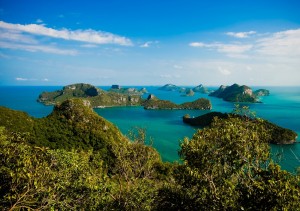
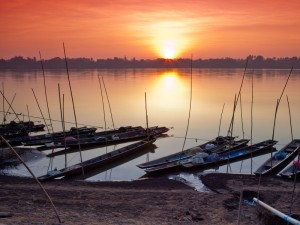
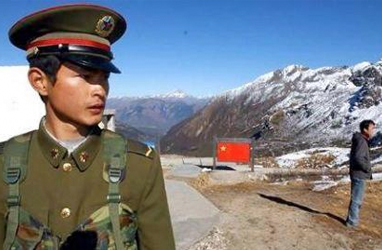

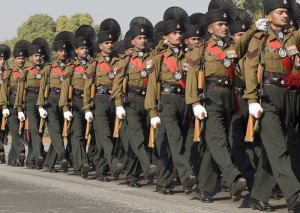




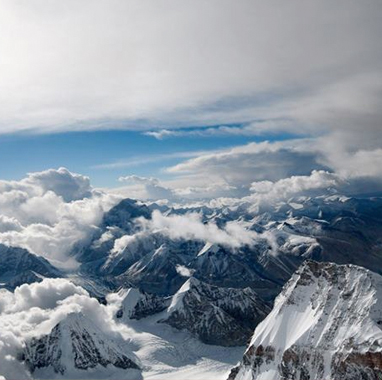
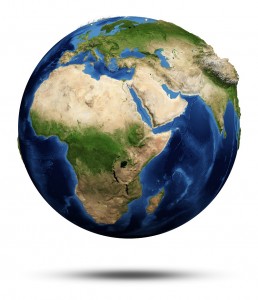
 Unlike the other autonomous regions in China, Tibet has maintained its ethnic identity throughout the history of the PRC; whereas the Uyghurs in Xinjiang, the Hui in Ningxia, the Mongols in Inner Mongolia, and the Zhuang in Guangxi all now account for less than half of the population in their respective areas, Tibetans still represent 92% of the population in their own autonomous region. This is, however, changing rapidly. The opening of the world’s highest railway connecting Qinghai to Lhasa – an impressive engineering feat that takes trains across mountain passes over 5200 meters high – has enabled a much greater flow of people into, and out of, the TAR. Han Chinese currently make up around 6% of the population, but that number is beginning to rise as the Chinese government encourages Han migration into the areas by providing incentives such as housing, business, and pension benefits. Indeed, It is estimated that Han Chinese now make up 50% of the population of the capital city, Lhasa, and the Chinese government is heavily investing in the city’s infrastructure to raise the city to modern Chinese standards. Beijing says that the Han economic migrants have temporarily come to Tibet in order to help modernize the area. Some Tibetans fear that China will use demographics as a way to more thoroughly integrate the region into China. Visitors to Lhasa are keenly aware of the division with the city almost literally split into two areas, one almost entirely Tibetan and the other almost entirely Han.
Unlike the other autonomous regions in China, Tibet has maintained its ethnic identity throughout the history of the PRC; whereas the Uyghurs in Xinjiang, the Hui in Ningxia, the Mongols in Inner Mongolia, and the Zhuang in Guangxi all now account for less than half of the population in their respective areas, Tibetans still represent 92% of the population in their own autonomous region. This is, however, changing rapidly. The opening of the world’s highest railway connecting Qinghai to Lhasa – an impressive engineering feat that takes trains across mountain passes over 5200 meters high – has enabled a much greater flow of people into, and out of, the TAR. Han Chinese currently make up around 6% of the population, but that number is beginning to rise as the Chinese government encourages Han migration into the areas by providing incentives such as housing, business, and pension benefits. Indeed, It is estimated that Han Chinese now make up 50% of the population of the capital city, Lhasa, and the Chinese government is heavily investing in the city’s infrastructure to raise the city to modern Chinese standards. Beijing says that the Han economic migrants have temporarily come to Tibet in order to help modernize the area. Some Tibetans fear that China will use demographics as a way to more thoroughly integrate the region into China. Visitors to Lhasa are keenly aware of the division with the city almost literally split into two areas, one almost entirely Tibetan and the other almost entirely Han.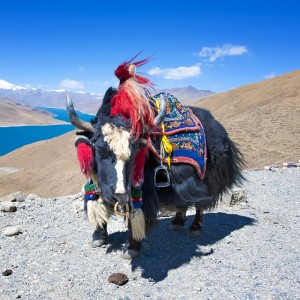
 The 13th century Mongol subjugation of Eurasia brought Tibet and China under one rule for the first time when both countries became subject nations under the Mongol empire. Having conquered China, Kublai Khan consolidated his rule by proclaiming himself the Emperor of the
The 13th century Mongol subjugation of Eurasia brought Tibet and China under one rule for the first time when both countries became subject nations under the Mongol empire. Having conquered China, Kublai Khan consolidated his rule by proclaiming himself the Emperor of the 
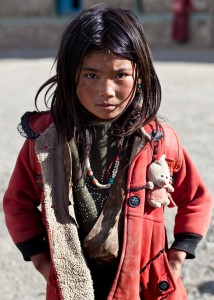
 However, whatever the rights and wrongs of the legal or moral claim that China may have over Tibet, there is no question that many Tibetans suffered both during the ‘liberation’ and after, particularly through forced collectivization and during the Cultural Revolution. In this latter period many temples were destroyed and monks forced to tend pigs, sometimes within the walls of their own religious institutions, a grievous insult. While it is important to keep such acts in context – the Cultural Revolution was a chaotic and unpleasant time for most people in China, regardless of ethnicity – it does not excuse such acts in the minds of Tibetans, and many continue to harbor ill feelings over this. Despite the orgy of destruction that ensued in the late 1960s, it is thought that the Potala Palace, the former winter home of the Dalai Lama and Tibet’s most famous symbol, was preserved at the behest of Zhou Enlai who recognized its significance.
However, whatever the rights and wrongs of the legal or moral claim that China may have over Tibet, there is no question that many Tibetans suffered both during the ‘liberation’ and after, particularly through forced collectivization and during the Cultural Revolution. In this latter period many temples were destroyed and monks forced to tend pigs, sometimes within the walls of their own religious institutions, a grievous insult. While it is important to keep such acts in context – the Cultural Revolution was a chaotic and unpleasant time for most people in China, regardless of ethnicity – it does not excuse such acts in the minds of Tibetans, and many continue to harbor ill feelings over this. Despite the orgy of destruction that ensued in the late 1960s, it is thought that the Potala Palace, the former winter home of the Dalai Lama and Tibet’s most famous symbol, was preserved at the behest of Zhou Enlai who recognized its significance.